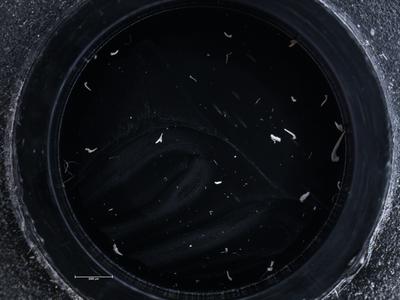Stratigraphy
Aseri Formation
ID | Number | Locality | Depth (m) | Stratigraphy | Collector | Date collected | Image | |||
|---|---|---|---|---|---|---|---|---|---|---|
From | To | |||||||||
| 137243 | EST 86-19 | Kerguta 565 borehole | Aseri Stage | Sjöstrand, Lisa | ||||||
| 137242 | EST 86-18B | Kerguta 565 borehole | Aseri Stage | Sjöstrand, Lisa |  +2 +2 | |||||
| 134352 | 134352 | Kerguta 565 borehole | 180.85 | 180.90 | Aseri Stage | Shogenova, Alla |  | |||
| 111042 | Häädemeeste 172 borehole | 515.00 | Aseri Stage | Shogenova, Alla | ||||||
| 111041 | Häädemeeste 172 borehole | 517.80 | Aseri Stage | Shogenova, Alla | ||||||
| 110591 | Kerguta 565 borehole | 180.50 | Aseri Stage | Shogenova, Alla | ||||||
| 110590 | Kerguta 565 borehole | 178.50 | Aseri Stage | Shogenova, Alla | ||||||
| 110189 | 110189 | Kerguta 565 borehole | 180.97 | 181.03 | Aseri Stage | Bauert, Garmen |  | |||
| 110188 | Kerguta 565 borehole | 180.47 | 180.70 | Aseri Stage | Bauert, Garmen | |||||
| 110187 | Kerguta 565 borehole | 180.21 | 180.29 | Aseri Stage | Bauert, Garmen | |||||
| 110183 | 110183 | Kerguta 565 borehole | 179.52 | 179.59 | Aseri Stage | Bauert, Garmen |  | |||
| 110180 | 110180 | Kerguta 565 borehole | 178.90 | 178.99 | Aseri Stage | Bauert, Garmen |  | |||
| 110177 | 110177 | Kerguta 565 borehole | 178.22 | 178.32 | Aseri Stage | Bauert, Garmen |  | |||
| 110175 | 110175 | Kerguta 565 borehole | 177.89 | 177.96 | Aseri Stage | Bauert, Garmen |  | |||
| 110174 | 110174 | Kerguta 565 borehole | 177.67 | 177.75 | Aseri Stage | Bauert, Garmen |  | |||
| 110173 | 110173 | Kerguta 565 borehole | 177.34 | 177.40 | Aseri Stage | Bauert, Garmen |  | |||
| 103042 | 103042 | Duboviki quarry | Aseri Formation | Eksp. | 1962-05-24 | |||||
| 96748 | 96748 | Kandava 25 borehole | 967.70 | Aseri Formation | Eksp. | |||||
| 95540 | 95540 | Kõrgessaare borehole | 86.00 | 86.10 | Aseri Formation | Hints, Linda | ||||
| 91007 | 91007 | Tiskre outcrop | Aseri Formation | Viira, Viive | 1962-07-02 | |||||
| 91006 | 91006 | Tiskre outcrop | Aseri Formation | Viira, Viive | 1962-07-02 | |||||
| 90634 | 90634 | Ontika cliff | Aseri Formation | Mägi, Silvi | ||||||
| 90550 | 90550 | Svedasai 252 borehole | 695.70 | Aseri Formation | Mägi, Silvi | |||||
| 90005 | 90005 | Suhkrumägi outcrop | Aseri Formation | Viira, Viive | 1963-08-29 | |||||
| 90004 | 90004 | Suhkrumägi outcrop | Aseri Formation | Viira, Viive | 1963-08-29 | |||||
Browse Geocollections
This site uses Matomo to analyze traffic and help us to improve your user experience. We process your IP address, viewed pages, load times and device information. This data is only processed by us.


